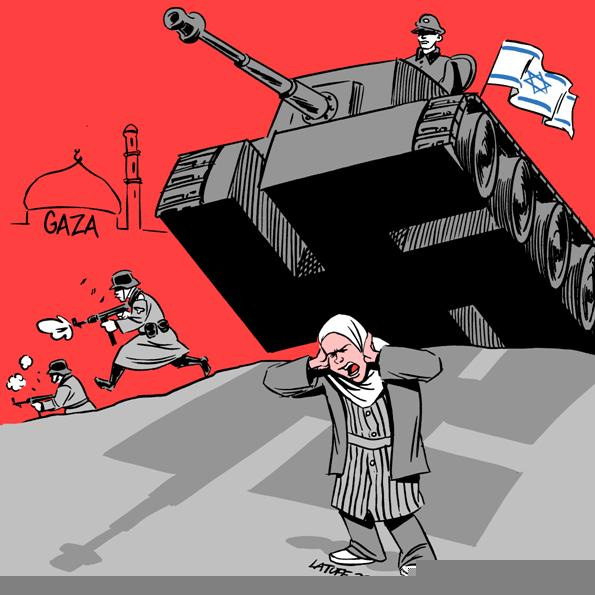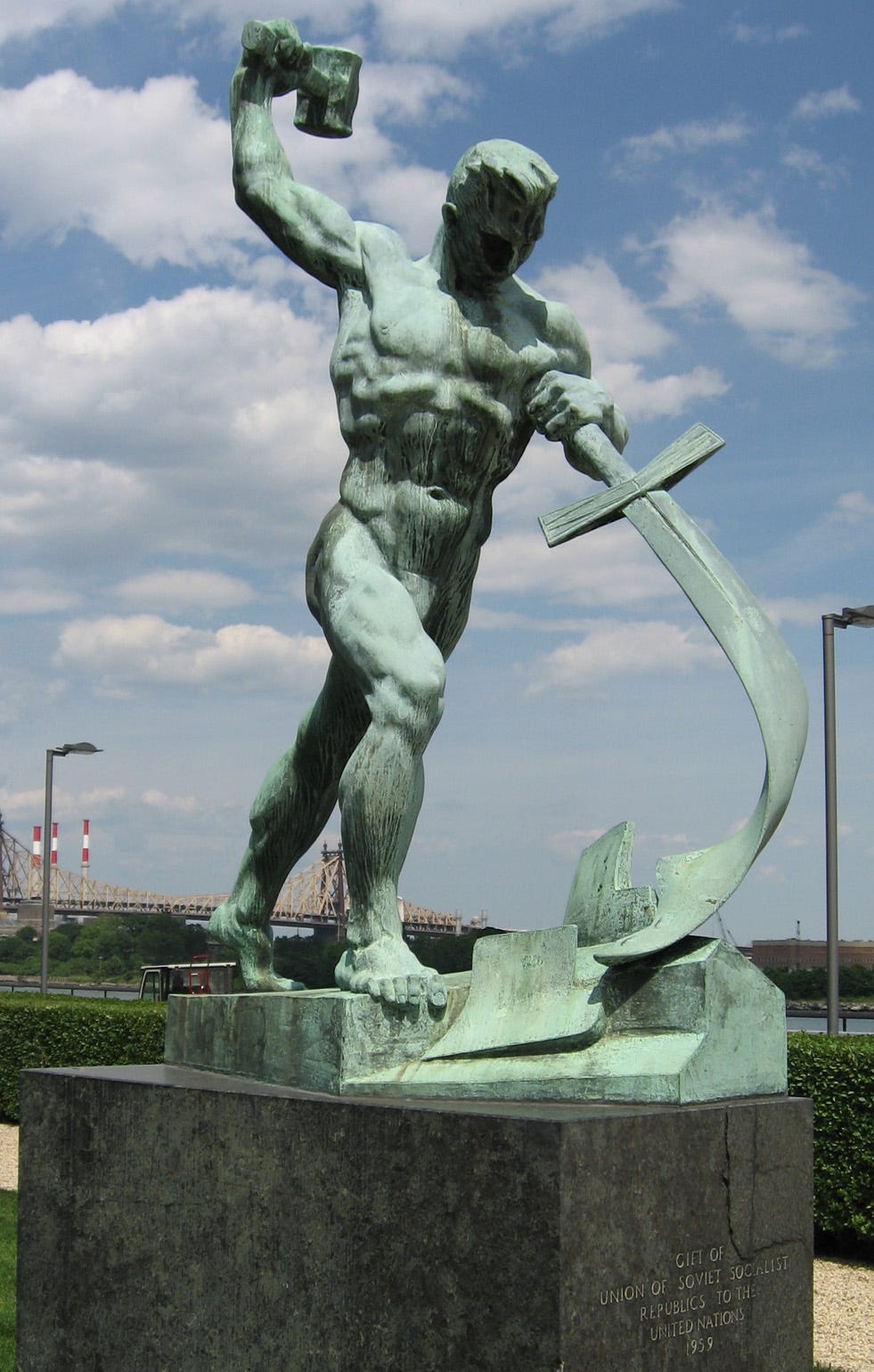Zion
is about the awakening of national Jewish consciousness
Not that the United Nations is in any way a respectable institution to be taken seriously — but for historical purposes — we should be aware that in 1975, the UN General Assembly adopted Resolution 3379, which determined that “Zionism is a form of racism and racial discrimination" with 72 votes in favor, 35 against, and 32 abstentions. It was revoked fourteen years later with a large majority with Resolution 46/86, but the damage to the word “Zionism” was done. Its association with chauvinism, hatred and bigotry was officially normalized, and the road was paved for modern accusations of war crimes and genocide, and casual usage of the term “Zionazi.”

“Zionism is a form of racism and racial discrimination.”
-The United Nations
This was all part of a plan.
Following Israel’s pyrrhic victory in the Yom Kippur War (1973), its enemies pivoted in their strategy towards seeking the legitimization of the Palestine Liberation Organization (PLO) as a diplomatic and governing entity — a change from how it had been known up until that point: an umbrella organization for terror organizations (e.g. DFLP, PFLP and Black September). While activists worked to legitimize the PLO on the world stage, they simultaneously worked to delegitimize the “Zionist entity” on that same stage.1 Their successes fed the mutation of these campaigns into an global movement hellbent on demonizing and delegitimizing Israel and ultimately “liberate Palestine” through the ethnic cleansing of Jews “from the River to the Sea.”2
It goes without saying that all of this is seriously messed up — and we haven’t even scratched the surface.
But maybe — maybe — there is a Divine message for us in all this.
Maybe the world’s misunderstanding of Zionism is pointing at a misunderstanding we have ourselves about what “Zion” is about…
The word “Zionism” was coined in 1890 by the Austrian Jew Nathan Birnbaum, a leader of the Hovevei Zion (“Lovers of Zion”) movement, a loose federation of Jewish groups who wanted to drum up support for the establishment of a Jewish state in the historical homeland of the Jewish people, which was then occupied by the Ottoman Empire. Of course, most people have never heard of Birnbaum, as he was eclipsed in public eye by Theodor Herzl who popularized the term that Birnbaum had coined with his book Der Judenstaat (The Jewish State) in 1896 and the momentous convening of the First Zionist Congress in Basel, Switzerland in 1897.
The two men eventually diverged dramatically with Birnbaum becoming significantly more religious, and a vocal opponent of Herzl’s secular-political Zionism.3
We’ll return to these clashing icons of Zion, but it should first be clear that the word “Zion” was most certainly not invented in the 1800s. The word Tzion (ציון) is over 3000 year old, appearing for the first time in the book of Samuel:
Shmuel II 5:7:
David captured the stronghold of Zion (ציון) that is [now] the City of David.
“Zion” is mentioned another 158 times in Tanakh (Scriptures), elusively referring to the Land of Israel in general, or the city of Jerusalem or parts of it specifically.4 This fact was not lost on even the most secular early Zionists who drew heavily on Jewish history as recorded in Tanakh, and its prophecies of the ingathering of the exiles in the Land of Israel in the future.
“The word Tzion (ציון) is over 3000 year old…”
If you scan through the many appearances of the word, you’ll see that the connotation of “Zion” in contrast to “Israel” and “Jerusalem,” points not only to a place in space but also to an era in time in which the ultimate destiny of the people of Israel is fufilled.
“…the connotation of ‘Zion,’ in contrast to ‘Israel’ and ‘Jerusalem,’ points not just to a place in space but also to an era in time — towards the ultimate destiny of the people of Israel.”
So what is the precise difference between Tzion (ציון) and Yerushalayim (ירושלים)?
Tzion (ציון) is the aspirational homeland of the Jewish people. There, and only there, can we live up to our national destiny according to the principles and practices of the Torah, independent of the approval or persecution of the nations of the world and their whims, but prepared to be a light unto them not through proselytizing, but through our example as a model society.5
Yerushalayim (ירושלים) is what it sounds like — the actual city of Jerusalem, which normally hosts 3+ million tourists a year and more Associated Press staffers than in China, Russia, or India, or in all of the 50 countries of sub-Saharan Africa combined. Jerusalem is where the rubber hits the road, and where we either succeed in inspiring the world, or don’t.6
We run into problems when we cross wires between these two terms. “Zion” is not meant to be a public-facing word, nor was the Zionist movement about gaining acceptance among the nations. The Zionist movement was meant to awaken the sleeping giant (the Jewish nation) to fulfill its destiny.
Jerusalem is where our work in Zion comes to fruition.
“‘Zion’ is not meant to be a public-facing word, nor was the Zionist movement about gaining acceptance among the nations.”
The dichotomy between Zion and Jerusalem can be seen in the well-known verse from the prophet Isaiah:7
Yishayahu 2:3:
וְהָלְכוּ עַמִּים רַבִּים וְאָמְרוּ לְכוּ וְנַעֲלֶה אֶל־הַר־ה׳ אֶל־בֵּית אֱלֹקי יַעֲקֹב וְיֹרֵנוּ מִדְּרָכָיו וְנֵלְכָה בְּאֹרְחֹתָיו כִּי מִצִּיּוֹן תֵּצֵא תוֹרָה וּדְבַר־ה׳ מִירוּשָׁלָ͏ִם
[In the future,] many peoples will go and say: “Let us go up to the Mountain of Hashem‚ to the House of the God of Jacob, so that we may be guided in His ways, and walk in His paths,” for [the truest] Torah is that which will emerge from Zion, and the word of Hashem from Jerusalem.8
Zion is the place where of the guidance of the Torah for Jews by Jews is contextualized within our national mission in the land of Israel.
Jerusalem is the place where the nations of the world will be able to experience the “Word of Hashem,” which is what they will seek — not “Torah” per se.

Herzl was not well-educated in Torah, but through the events of his life, he became enraptured by the idea of Jewish self-determination and statehood. Although his vision was vital to the formation of the Jewish State, it didn’t penetrate to Zion.
Here are Herzl’s final words in The Jewish State:
The world will be freed by our liberty, enriched by our wealth, magnified by our greatness. Whatever we attempt there to accomplish for our own welfare, will react powerfully and beneficially for the good of humanity.
He clearly envisioned Israel having a massive positive impact on the world, but in his mind, it would be due to “our liberty,” “wealth,” and “greatness” — not the “Word of Hashem” shining through us.
Birnbaum, on the other hand, especially as he learned more Torah and became more observant, felt that Herzl’s vision was not deeply rooted in that which makes the Jewish nation Jewish, and gave up on the whole project of Zionism entirely.
Both men were right, and both men were wrong.
Jerusalem will become the lightbulb for the world, but only when filament that is the people of Israel glows with the electricity of Torah plugged into Zion.
The notion of Zion means that we cannot be satisfied with being a religion of disparate communities scattered around the globe, who gather on Zoom periodically for “unity events.”
Zion means that our destiny is to be a cohesive, healthy, happy, growing society that is committed to fulfilling the Word of God in the Torah in a way that is realistic, sustainable and edifying for all elements of that society. This mission of Zion is no one’s business but our own.
When we succeed, which we will, then, “the Word of Hashem will [go out] from Jerusalem, thus He will judge [disputes] between nations, and arbitrate for the many peoples — they shall beat their swords into plowshares and their spears into pruning hooks — nation shall not take up sword against nation, they shall never again know war.”

Resolutions 3236 and 3237, adopted only a year prior to 3379, officially recognized the "Question of Palestine" and invited the PLO to have a non-member observer status, which they enjoy until today. These resolutions followed the infamous "Olive Branch Speech" by Palestinian terrorist-turned-politician Yasser Arafat.
See the 2023 report by Lorenzo Vidino (George Washington University’s Program on Extremism) on the development of the Hamas network in the United States focused on “cultural change.” One of the richest sources of information on this intent and strategies of this movement to malign the notion of Zionism in public opinion was a meeting of top Hamas activists in Philadelphia in 1993 that was wiretapped by the FBI.
As we’ll see shortly, the longing to return to Zion with authentic self-determination preceded both of these men. The Talmud, Zohar and Tanakh are saturated with this aspiration. Even the modern resurgence of the Zionist ideal preceded Birnbaum and Herzl:
Rabbi Tzvi Hirsch Kalischer (1795-1874)
Rabbi Yehudah Alkalai (1798-1878)
Rabbi Eliyahu Kramer (the “Vilna Gaon”) (1720-1797)
Even the more specific term “Har Tzion (הר ציון)—Mount Zion” can can refer to:
the hill that is known as the “City of David” (adjacent to, and south of the old city), or
what is known today as Mount Zion, outside of the Zion Gate, or
to the Temple Mount on which Beit Hamikdash (the Holy Temple) stood for nearly a thousand years combined.
The elusiveness of the term “Zion” is due to its referring to the inner dimension of Jerusalem’s destiny more than a specific place, as we will develop in the article.
This is based off of the writings of Rav Avraham Yitzchak HaKohen Kook, the most prolific voice of Torah Zionism, in his commentary Ayin Aye on Tractate Berakhot, ch. 9, §330, 359. Rav Kook there elaborates on the Talmud’s usage of the verse from Isaiah 2:3 (quoted later in our article) to explain why the reaction was so harsh to a rabbi gone rogue, issuing rulings from Babylonia, which should have been issued from Jerusalem — or more precisely, Zion.
This helps us understand the Zohar Vaetchanan 8 that states that “Tzion” is connected to Mercy, and “Yerushalayim” to Judgment. Hashem has shown us great mercy over the last two centuries in our ability to connect with the ideas that surround our destiny, but getting the actual city of Jerusalem to live up to these ideas has no shortcuts. It must be earned painstakingly.
The Zion-Jerusalem dichotomy is articulated even more clearly in the work Shaarei Orah, Gate 2, where he explains that the Zion-Jerusalem relationship is the same as the relationship between the Sefirah of Yesod to the Sefirah of Malchut. Zion must animate Jersualem as Yesod is what animates Malchut (one who understands these secrets will understand this analogy).
Ironically, this verse comes right before the verse emblazoned outside of the United Nations:
Yishayahu 2:4:
Thus [God] will judge among the nations
And arbitrate for the many peoples,
And they shall beat their swords into plowshares
And their spears into pruning hooks:
Nation shall not take up
Sword against nation;
They shall never again know war.
See the commentary of Metzudat David ad loc.








Oh, I did not know it represented time as well.